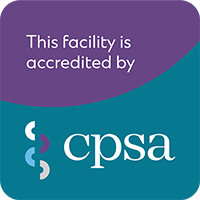I’ve never had the chance to listen to or meet Nobel prize winners. Today was the day. Basic science royalty in the house at the World Congress of Pain.
PIEZO channels – say what?
Dr Patapoutian has performed research investigating sensory modalities, and most particularly, that of pressure and proprioception. His lab identified PIEZO1 and PIEZO2, mechanically active ion channels that are expressed in mechanosensitive cell types (I copied that from the abstract!!!) Interestingly, those that are PIEZO2-deficient lack touch sensitivity and proprioception (struggle to walk without use of eyes). These channels also mediate sensitivity to touch (i.e. allodynia) and mechanical itch, together with respiration, baroreception, partuition and gut motility amongst other functions. For that he won a Nobel prize for medicine. Very clever person +++ He knows his stuff. Great science built on 14 years of study.
TRP ion channels
Dr. Julius presented an overview of various ion channels and their association with pain. As a background, the primary afferent (incoming) nerve fibre is an integrator of physical and chemical signals. Release of transmitters that occur with tissue damage influences nociception. Maladaption (sensitivity of the channel) can result in persistent pain. Capsaicin, wasabi, onions and menthol can produce irritation or pain by activating TRP channels (voltage gated ion channels). This can result in pain. Thus, there is interest in ‘blocking’ these channels with drugs. Some challenges in drug discovery for antagonists to TRPV1 dysregulation, include a rise in core body temperature and diminished acute heat sensitivity – a problem when drinking a hot coffee!!! We need the protective role of pain to prevent being burnt! Dr Julius dived into much more science, which was expertly explained – really important stuff.
As he explained, it is great that touch and pain are being recognized by the Nobel Laureates.
What else was captured today?
Sleep
A wonderful topical workshop covered the challenges with sleep and its effect on pain and tissue hypersensitivity. We’ve previously published our clinic’s data on Sleep. Thankfully, our data is in line with the general literature. I was interested in the treatment options. It was noteworthy that CBT for insomnia has stronger evidence for effectiveness than medication in treating sleep insomnia. We really try to address this with our PWLE. As mentioned by the panel, you can’t change aberrant thoughts and feelings if you have had significant sleep disturbance. You have to be able to think clearly first. My question – how do you change people’s expectations to ensure that they find this important for their chronic pain? It is a challenge, but at least we’re not alone and thinking the right way. Maybe we need innovation – as another workshop provided wonderful digital tools to address some of these factors that people don’t wish to spend time in a clinic on…we need to be innovative in providing options for treatment…
This long week comes to an end tomorrow. Learnt lots and hope to learn more 😊





